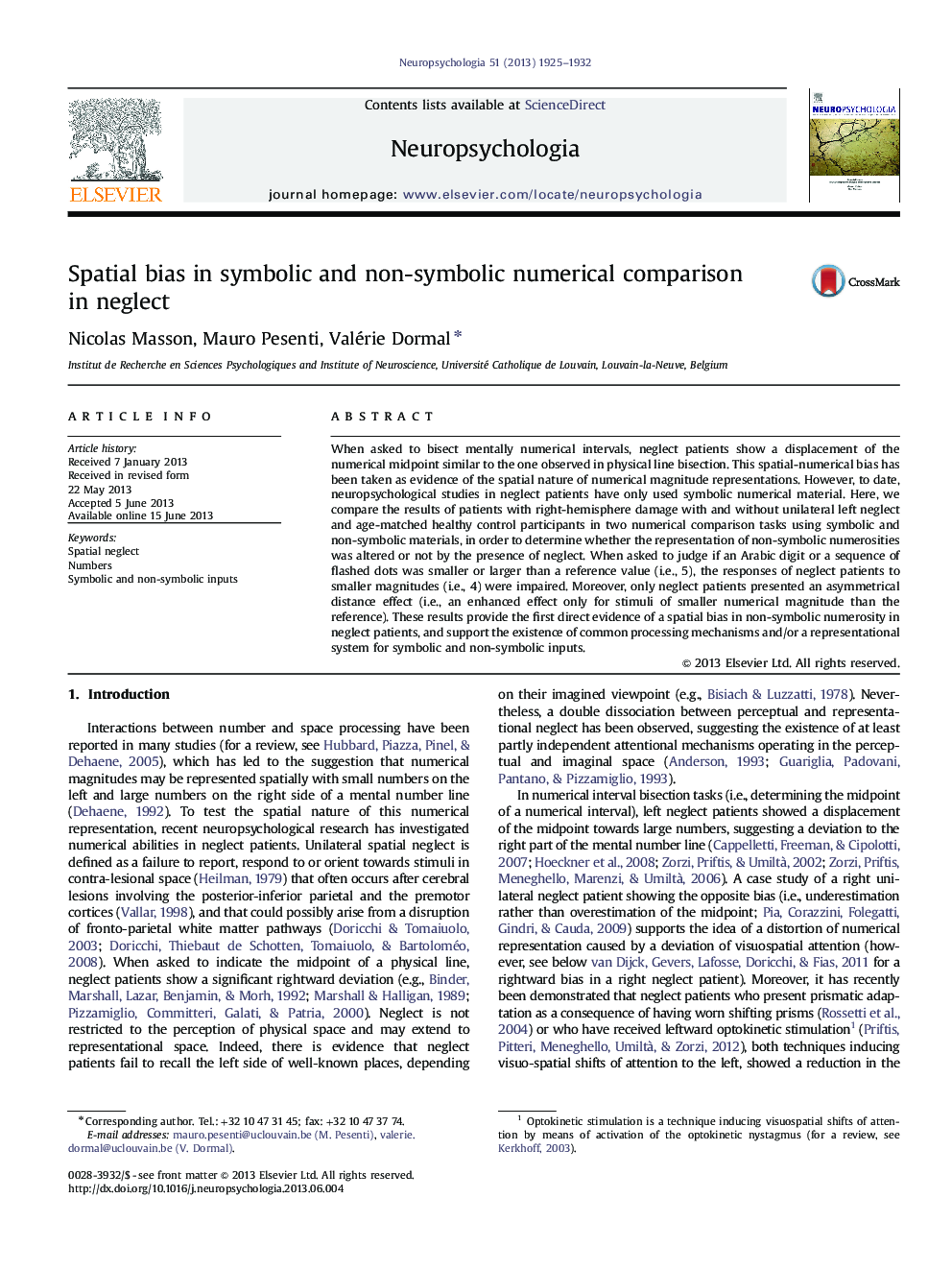| Article ID | Journal | Published Year | Pages | File Type |
|---|---|---|---|---|
| 10464786 | Neuropsychologia | 2013 | 8 Pages |
Abstract
When asked to bisect mentally numerical intervals, neglect patients show a displacement of the numerical midpoint similar to the one observed in physical line bisection. This spatial-numerical bias has been taken as evidence of the spatial nature of numerical magnitude representations. However, to date, neuropsychological studies in neglect patients have only used symbolic numerical material. Here, we compare the results of patients with right-hemisphere damage with and without unilateral left neglect and age-matched healthy control participants in two numerical comparison tasks using symbolic and non-symbolic materials, in order to determine whether the representation of non-symbolic numerosities was altered or not by the presence of neglect. When asked to judge if an Arabic digit or a sequence of flashed dots was smaller or larger than a reference value (i.e., 5), the responses of neglect patients to smaller magnitudes (i.e., 4) were impaired. Moreover, only neglect patients presented an asymmetrical distance effect (i.e., an enhanced effect only for stimuli of smaller numerical magnitude than the reference). These results provide the first direct evidence of a spatial bias in non-symbolic numerosity in neglect patients, and support the existence of common processing mechanisms and/or a representational system for symbolic and non-symbolic inputs.
Keywords
Related Topics
Life Sciences
Neuroscience
Behavioral Neuroscience
Authors
Nicolas Masson, Mauro Pesenti, Valérie Dormal,
